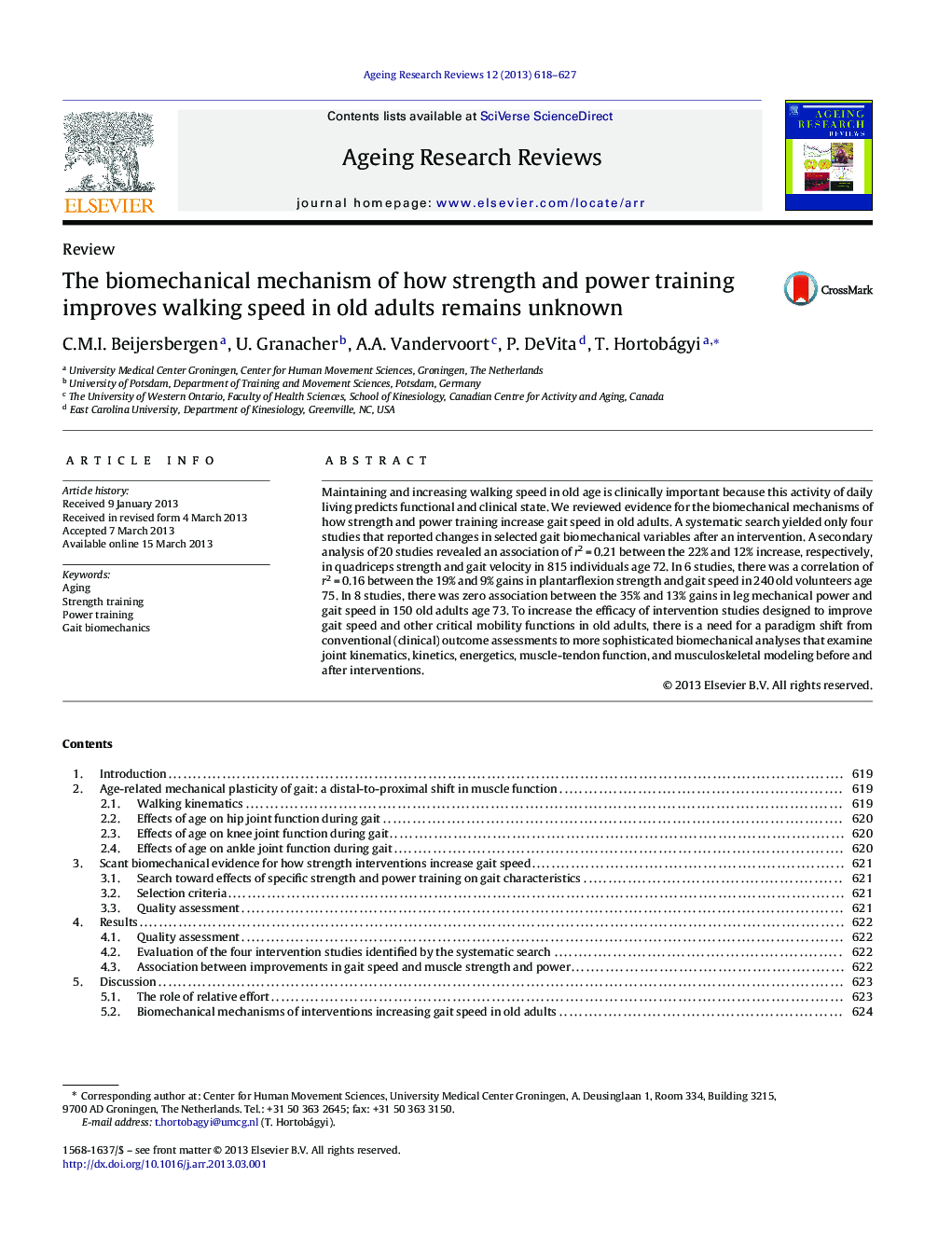| Article ID | Journal | Published Year | Pages | File Type |
|---|---|---|---|---|
| 1902349 | Ageing Research Reviews | 2013 | 10 Pages |
Abstract
Maintaining and increasing walking speed in old age is clinically important because this activity of daily living predicts functional and clinical state. We reviewed evidence for the biomechanical mechanisms of how strength and power training increase gait speed in old adults. A systematic search yielded only four studies that reported changes in selected gait biomechanical variables after an intervention. A secondary analysis of 20 studies revealed an association of r2Â =Â 0.21 between the 22% and 12% increase, respectively, in quadriceps strength and gait velocity in 815 individuals age 72. In 6 studies, there was a correlation of r2Â =Â 0.16 between the 19% and 9% gains in plantarflexion strength and gait speed in 240 old volunteers age 75. In 8 studies, there was zero association between the 35% and 13% gains in leg mechanical power and gait speed in 150 old adults age 73. To increase the efficacy of intervention studies designed to improve gait speed and other critical mobility functions in old adults, there is a need for a paradigm shift from conventional (clinical) outcome assessments to more sophisticated biomechanical analyses that examine joint kinematics, kinetics, energetics, muscle-tendon function, and musculoskeletal modeling before and after interventions.
Related Topics
Life Sciences
Biochemistry, Genetics and Molecular Biology
Ageing
Authors
C.M.I. Beijersbergen, U. Granacher, A.A. Vandervoort, P. DeVita, T. Hortobágyi,
